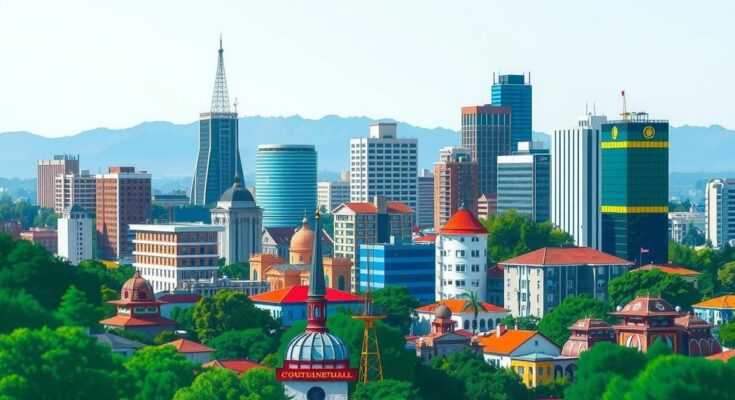The article examines the complexities of leading Kenya, illustrating how past and present presidents navigate political survival through compromises with elites. It highlights the shifting dynamics of voter engagement, moving away from ethnic politics towards merit-based candidates, as the 2027 elections approach. The piece calls for a new generation of leadership, urging young politicians to prepare for significant political change by 2032.
The presidency of Kenya is increasingly recognized as an incredibly demanding position that requires extensive negotiation and compromise with political elites, often to the detriment of the electorate’s interests. Historical examples illustrate this dynamic, such as President Mwai Kibaki’s tenure marked by power-sharing and constitutional reforms. Similarly, President Uhuru Kenyatta’s legacy was significantly shaped by his handshake with Raila Odinga, underscoring the need for political stability through collaboration.
In contrast, President William Ruto, who previously rejected the notion of political handshakes, now oversees a government he previously branded a ‘mongrel.’ His current administration consists of opposition figures integrated into the government, highlighting the unpredictable nature of political survival. Ruto’s approach reflects a broader necessity within the presidency that often challenges pre-established convictions about governance.
Critics contend that Ruto’s administration has opted for self-preservation, aligning with political elites lacking significant grassroots support. The administration’s strategy seems to rely on a coalition of regional leaders to secure collective votes, reminiscent of past political tactics that failed to resonate with a diversifying electorate. This model reduces voters to mere ethnic blocs, disregarding their individual concerns and aspirations.
Furthermore, there is a notable shift as Kenyans increasingly distance themselves from ethnic politics, uniting against shared socioeconomic issues like rising taxes and the high cost of living. This emerging collective consciousness suggests that citizens are beginning to prioritize individual merit over tribal allegiance, signaling a significant transformation in the electorate’s outlook.
The prevailing narrative surrounding Ruto’s potential loss of the Mt. Kenya vote reflects misconceptions about voter behavior in an evolving political landscape. This outdated view does not account for the electorate’s fatigue with traditional political elites and their growing preference for candidates who demonstrate personal integrity and policy competence.
To ensure a more representative government in the future, there is a critical need to shift away from divisive ethnic politics. If Ruto is re-elected in 2027, it may signify a pivotal moment marking the end of the current political generation. Subsequently, younger politicians are encouraged to build their careers within various political landscapes and prepare for a significant transition in leadership by 2032, allowing a fresh wave of leadership to emerge.
In summary, the challenges of leading Kenya reflect deeper issues within its political structure, where handshakes and compromise often overshadow the electorate’s needs. The evolving political landscape indicates a growing discontent with traditional ethnic blocs and a desire for leadership that resonates with individual merit. With the 2027 elections on the horizon, there is an opportunity for a new generation of leaders to arise, ready to address the pressing issues facing the citizens of Kenya and reshape its political future.
Original Source: www.capitalfm.co.ke




